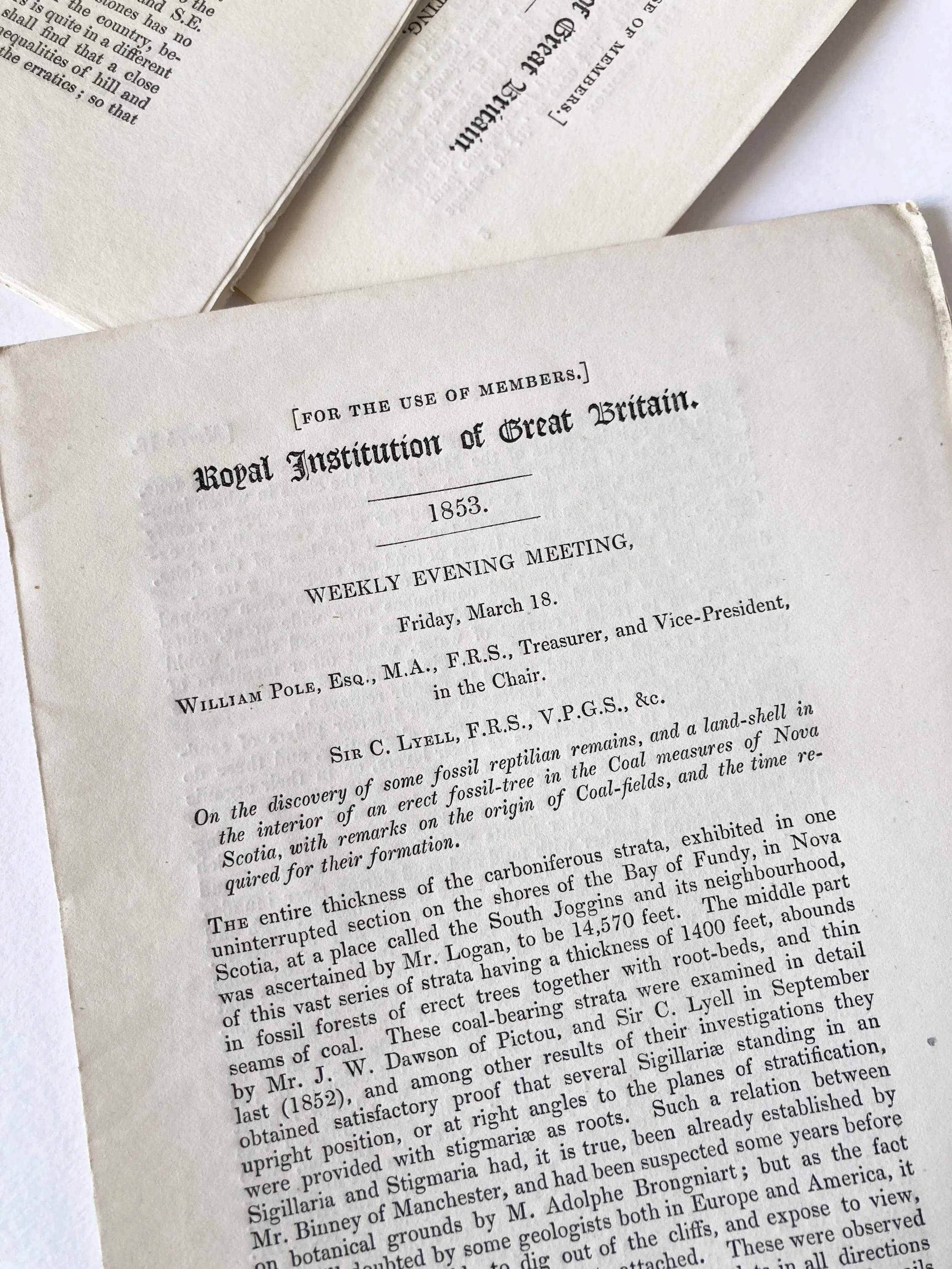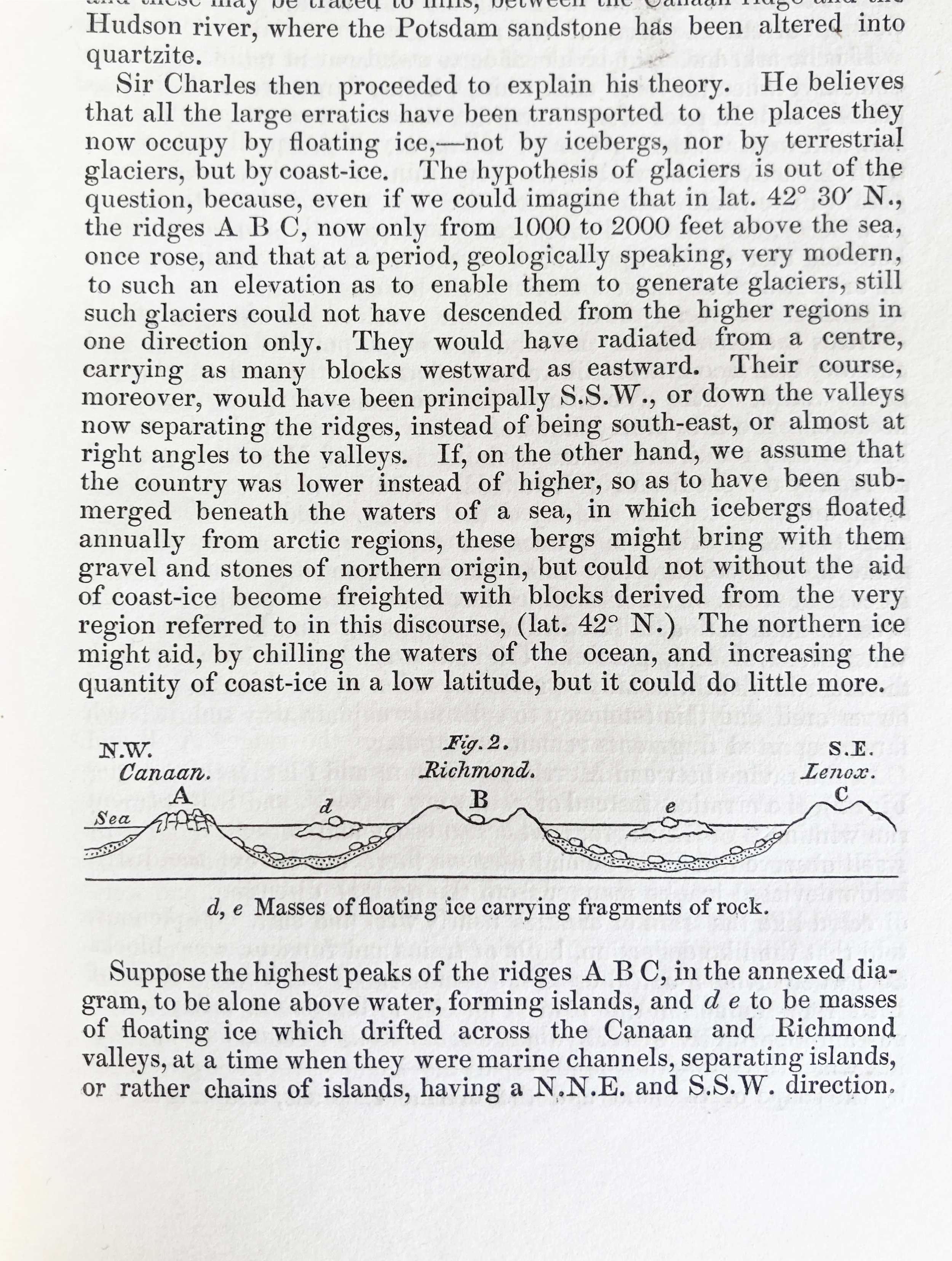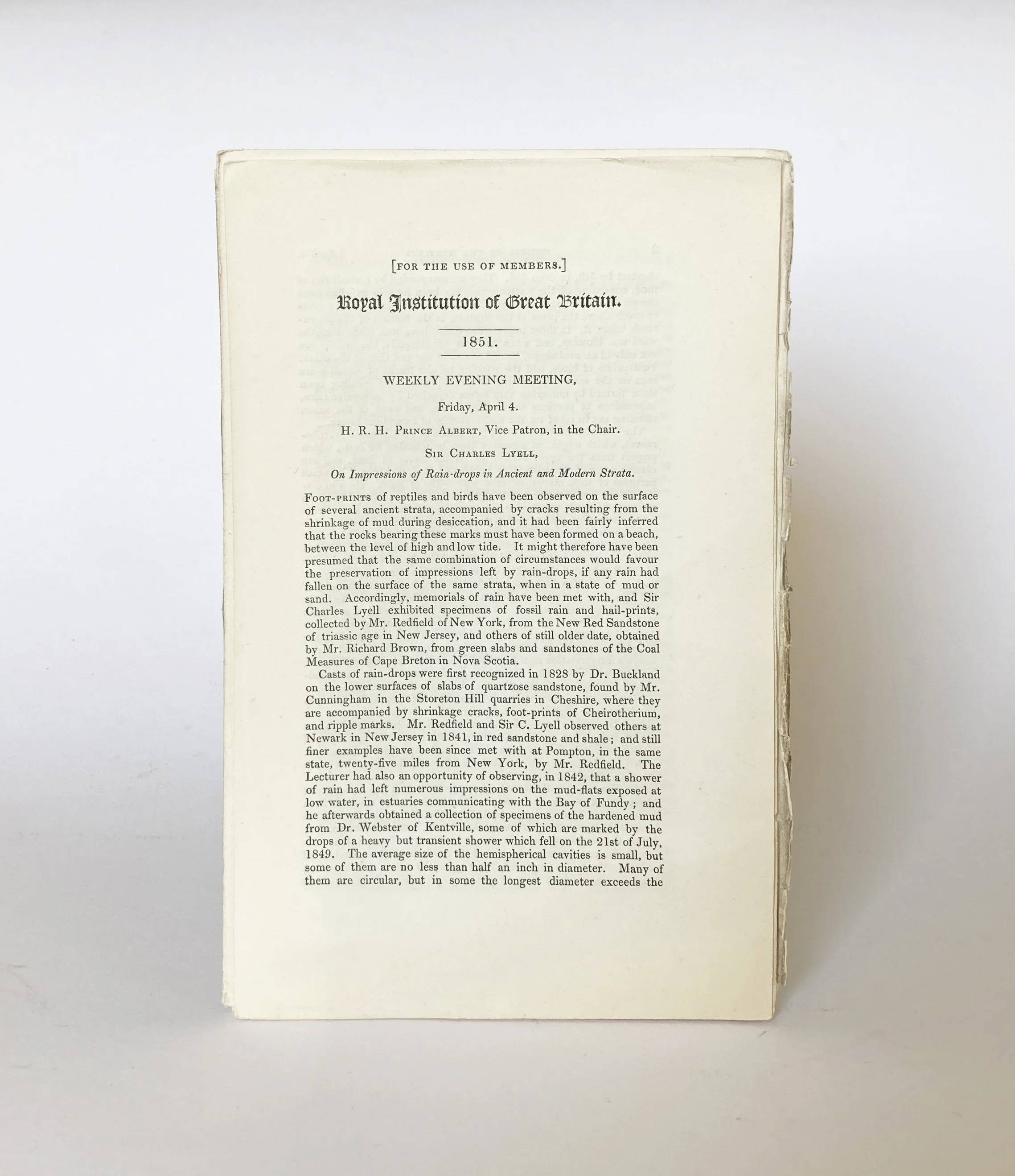Charles Lyell in America: a group of exceptionally scarce lectures



Charles Lyell in America: a group of exceptionally scarce lectures
LYELL, Charles (1797–1875)
A group of three offprints of Royal Institution lectures, 1851–1855
A group of three exceptionally scarce pamphlets recording lectures by Charles Lyell on his trip to North America, 1841–1855:
On Impressions of Rain-drops in Ancient and Modern Strata, 4 April 1851, 4pp.
Unrecorded: “On July 16, Charles and Mary sailed to Halifax to spend a month studying the geology of Nova Scotia, [...] At the Bay of Fundy, Charles was impressed with red-mud tidal flats displaying excellent sand piper foot prints, rain drop impressions, and desiccation cracks analogous with similar Triassic features, which he had seen in Connecticut and New Jersey” (Robert H. Dott, ‘Lyell in America – His Lectures, Fieldwork and Mutual Influences, 1841–53’, Earth Sciences History (1996), 101–140, on p. 112)
On the discovery of some fossil reptilian remains, and a land-shell in the interior of an erect fossil-tree in the Coal measures of Nova Scotia, with remarks on the origin of Coal-fields, and the time required for their formation, 18 March 1853, 8pp.
OCLC records only Cambridge, Glasgow, and Oxford: “Although in America he learned mostly from other geologists, Lyell did make some important original contributions [...] Most important were the following: 1. Demonstration of the great trans-Atlantic uniformity of the Carboniferous coal measures and the implication of a former land connection; 2. Discovery (with Dawson) of Carboniferous reptiles and terrestrial molluscs in Nova Scotia” (Dott, p. 128)
On certain Trains of Erratic Blocks on the Western borders of Massachusetts, United States, 27 April 1855, 12pp., illustrations, stitched
OCLC records only Glasgow, Paris and Zurich. “Lyell interpreted these boulder trains as deposited from floating ice [...] Contemporary editions of Principles and Elements indicate that, if anything, Lyell was even more strongly committed than ever to icebergs as the principal agent of dispersal of drift. He also continued to regard the ‘glacial climate’ as the result of ‘an excessive and abnormal accumulation of land around the Pole’.” (Dott, p. 124)
Very good condition: very minor offset staple rusting to the 1855 pamphlet, otherwise near fine.

